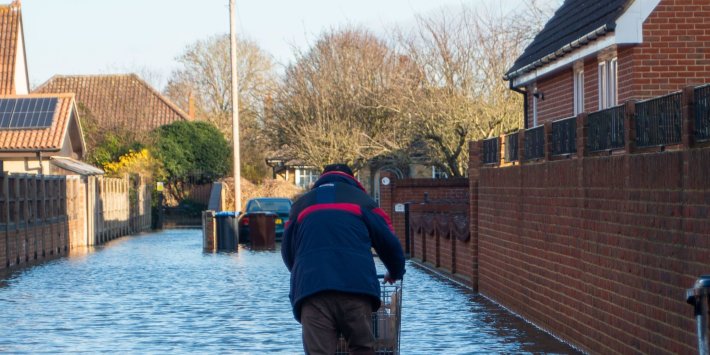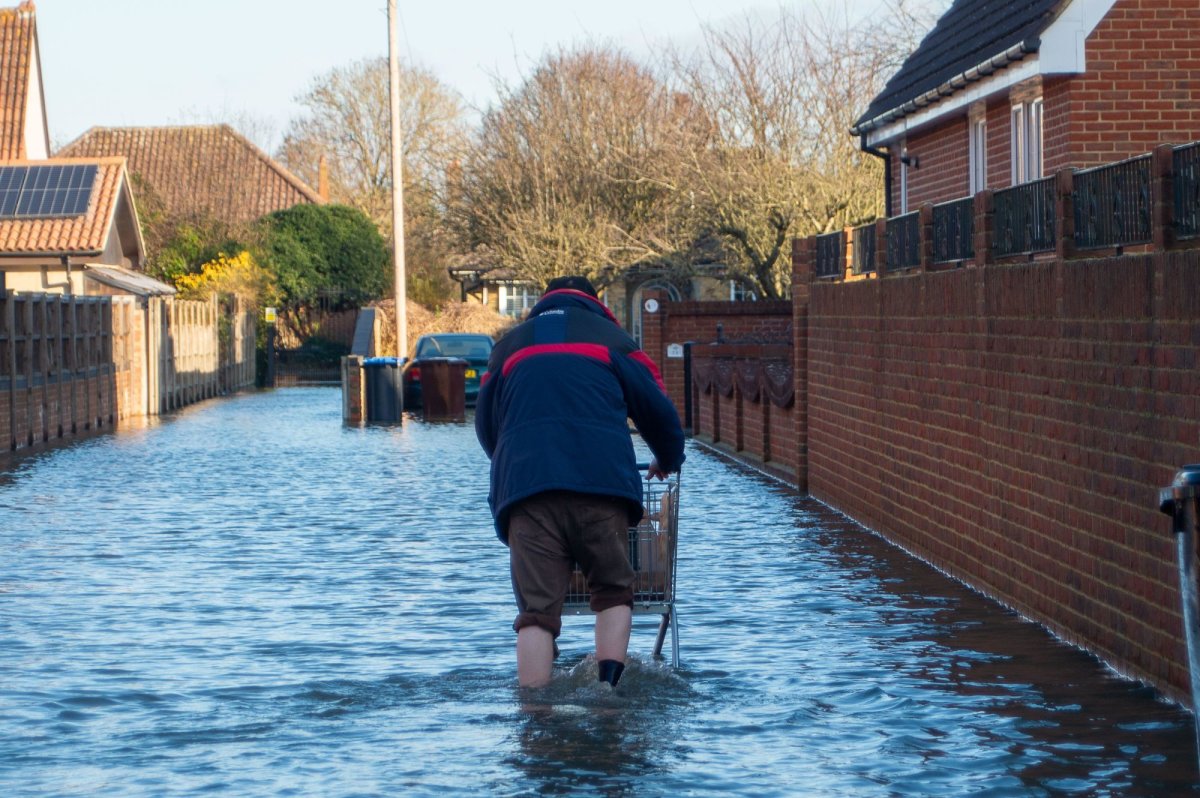
Flooding in Staines upon Thames in Surrey, January 2024 (Credit: Maureen McLean/Alamy Live News)
3 min read1 hr
Central banks may not be the first thing that comes to mind when thinking about addressing the climate and nature crises, or how our reliance on fossil gas continues to drive high energy costs for consumers and businesses.
And yet, these are both issues that directly threaten the two key objectives that we have assigned to central banks: keeping prices stable, and preventing another financial crash.
The connection between climate change and rising food prices is becoming ever clearer, with “climateflation” pushing up the cost of staples like coffee, chocolate and olive oil that we import, as well as hitting our own crops, like wheat and oats, particularly hard.
As former Bank of England governor Mark Carney warned over a decade ago, the degradation of our climate and natural environment is also a serious financial stability threat. Consider our homes: with house prices in England at around eight times average earnings, first-time buyers must now become heavily indebted to get on the ladder. Flooding, droughts and coastal erosion are already resulting in record home insurance payouts, rising premiums and uninsurability. With a large mortgage, this means people trapped in homes they cannot sell, and risks collapsing house values that trigger a crisis.
These fundamental threats to the stability of our economy have been recognised by central banks worldwide, including the Bank of England. They have also recognised, rightly, that governments must lead the way in tackling these problems.
But through monetary policy and financial regulation, central bank policy can either support or impede the actions of the government and private sector. Unfortunately, the Bank of England is currently doing the latter. For example, renewables – although cheaper once operational – require a large amount of up-front investment. The Bank’s raising of interest rates across the economy, without taking actions to shield green technologies, means that high rates have harmed the business case for such projects. With fossil fuels one of the main drivers of UK inflation, this not only hinders the government’s Clean Energy mission, but is clearly counterproductive to managing inflation.
Tools designed to shield green projects from rate rises have been used by the Bank of Japan, and have even previously been advocated for by members of the Bank of England’s Monetary Policy Committee. Closer to home, the European Central Bank recently announced other important measures to integrate climate and nature into its monetary policy.
It wasn’t always this way. The Bank of England emerged as an early climate leader, but it is now quickly slipping behind. When Positive Money first began assessing central bank action on climate change in 2021, the Bank of England ranked fourth place in the G20. But by 2024, it had slipped down to seventh.
Recognising this failure, and its implications for the UK’s reputation as a global climate leader, Labour committed to ensuring climate was a priority for the Bank in its manifesto. But unfortunately, as 11 leading economic and environmental organisations outlined last month, the Bank does not seem to have changed course.
This warrants a clear steer from MPs and our government, pressing the Bank to take decisive action to support the UK’s climate, nature and Clean Energy goals, for which there remains widespread public support. Doing so would wholly support the Bank’s primary objectives of maintaining monetary and financial stability. It could also be the key to directing billions of pounds away from fossil fuels and towards the homegrown renewables that will bring our bills down for good.
Sara Hall is co-executive director of Positive Money

